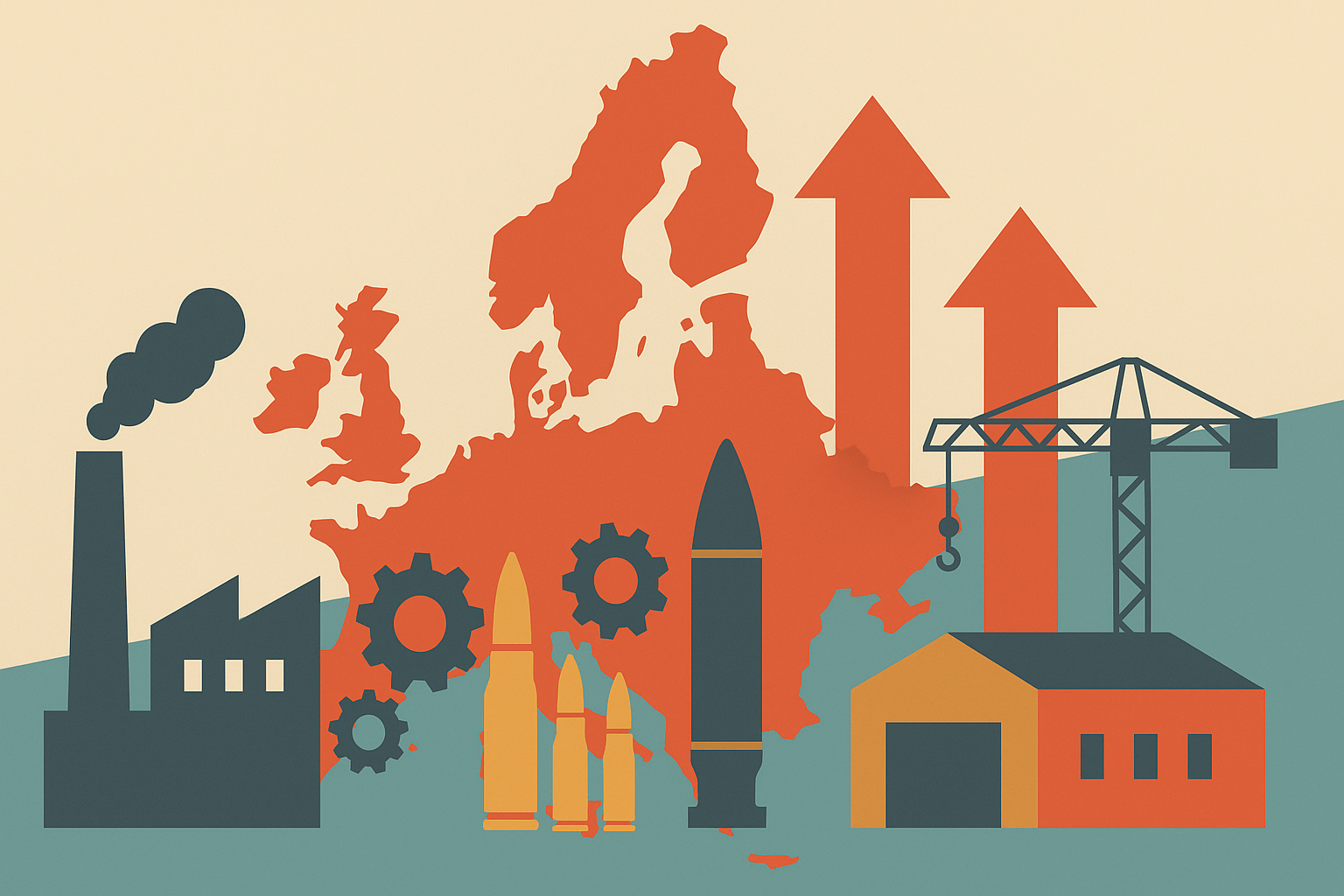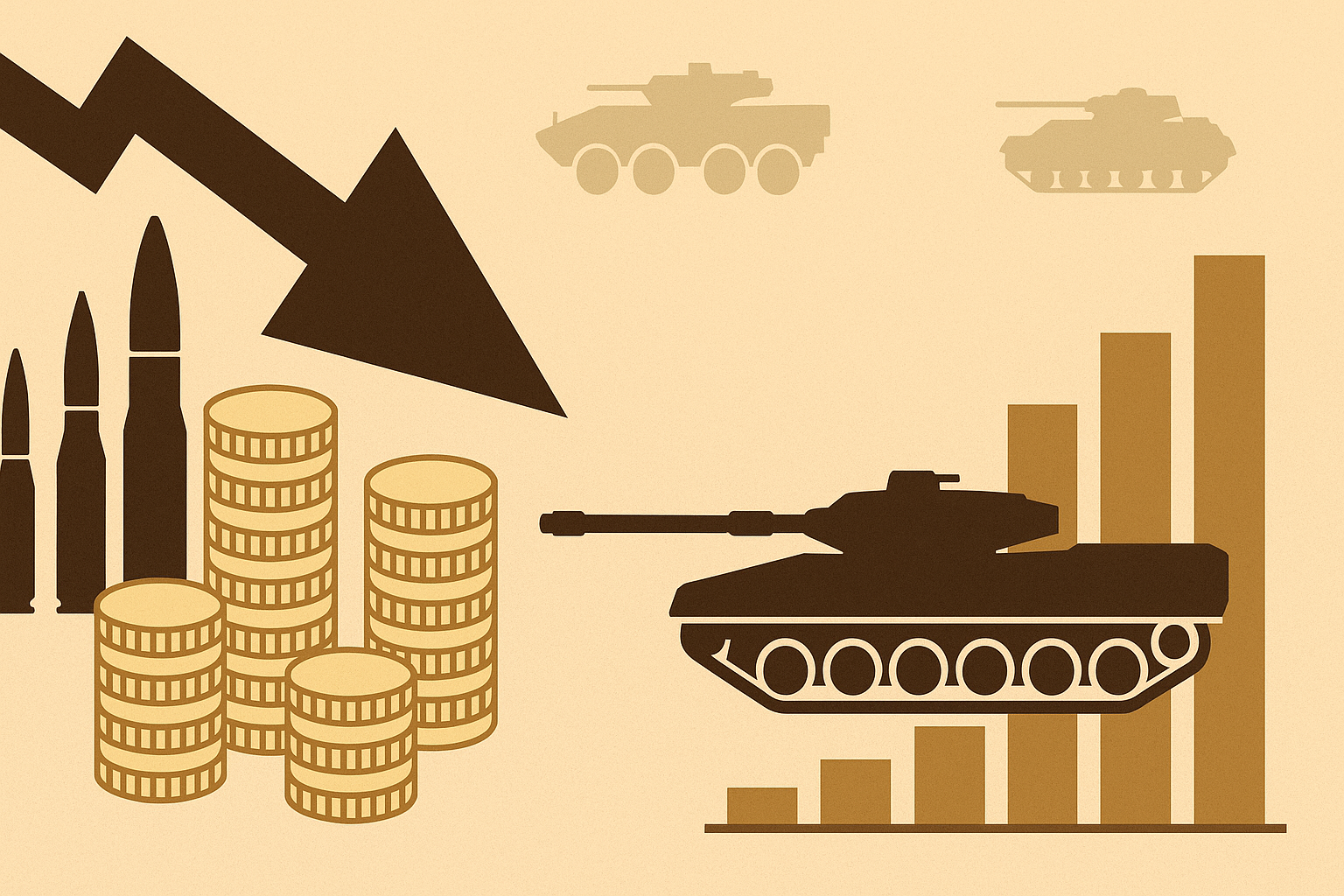Europe’s defence industry is undergoing its largest expansion in decades, with weapons factories growing at three times the rate of peacetime. New industrial developments now span more than 7 million square metres — a scale not seen since the Cold War — as the continent shifts towards sustained war-time production in response to Russia’s full-scale invasion of Ukraine in 2022.
A Financial Times analysis of radar satellite data from 150 facilities across 37 companies shows that Europe’s long-promised defence revival is no longer just political rhetoric. Physical construction — from excavation works to new buildings and roadways — is transforming arms manufacturing capabilities. Roughly one-third of the monitored sites showed significant expansion between 2020–21 and 2024–25, with total developed space jumping from 790,000 to 2.8 million square metres.
EU Funding Boosts Expansion
The surge is being driven by government subsidies and EU initiatives such as the Act in Support of Ammunition Production (ASAP), a €500 million programme targeting bottlenecks in ammunition and missile manufacturing. Among the largest expansions is Rheinmetall’s joint project with Hungary’s state-owned N7 Holding in Várpalota, which began producing 30mm ammunition in 2024 and will soon manufacture 155mm artillery shells and 120mm tank rounds.
Of the 88 sites linked to ASAP, 20 have seen major construction, including entirely new factories, while 14 showed smaller developments. Sites benefiting from ASAP funds expanded more rapidly than those without, underscoring the programme’s impact.
Industrial Scaling Across Europe
Germany’s MBDA headquarters in Schrobenhausen has expanded by 94,000 square metres, backed by €10 million from ASAP and a $5.6 billion NATO order for Patriot surface-to-air missiles. Norway’s Kongsberg opened a new missile factory in 2024, while the UK’s BAE Systems has invested over £150 million in its munitions facilities, with plans to increase 155mm shell production sixteen-fold at its Glascoed site in Wales.
EU defence commissioner Andrius Kubilius said European ammunition output has grown from 300,000 rounds annually before the war to about 2 million expected by the end of 2025. Rheinmetall alone aims to boost production of 155mm rounds from 70,000 in 2022 to 1.1 million by 2027.
Strategic and Security Implications
Officials and analysts view this expansion as a generational shift in Europe’s defence posture, moving away from “just-in-time” peacetime production towards sustained readiness. However, experts warn that actual output still falls short of potential capacity, and certain bottlenecks — such as miniature jet engines for long-range missiles and explosive filler — remain critical constraints.
Defence analysts stress that expanding missile capabilities is vital for NATO’s deterrence strategy, especially as Russia’s mobilisation outpaces that of its adversaries. As Latvian foreign minister Baiba Braže put it, the challenge is ensuring that this unprecedented investment delivers real capabilities while using taxpayer funds effectively.
The EU is now negotiating a new €1.5 billion defence programme to replicate the ASAP model for other priority areas, including air defence, artillery, and drones, marking a further step in Europe’s transformation into a high-capacity military production hub.








